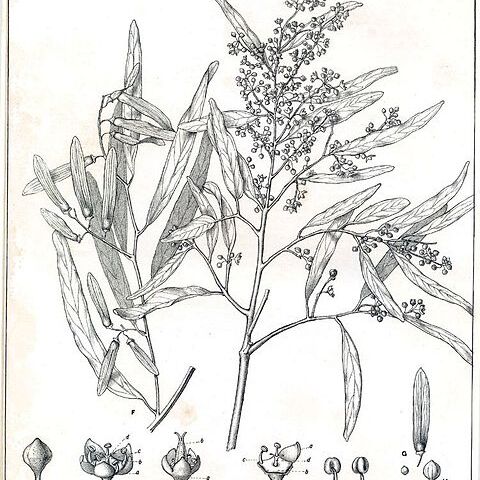Scandent trees, shrubs or lianes, climbing by knot-branches, evergreen, glabrous or simple-pubescent. Leaves alternate, petiolate, concolorous, penniveined (almost parallel-veined in V. viminalis); stipules free, usually caducous. Inflorescences axillary and terminal, comprising 3–many-flowered contracted cymes arranged in sparsely branched short or elongate pseudoracemes; bracts caducous. Flowers bisexual, 5-merous, greenish. Hypanthium saucer-or cup-shaped. Sepals erect to recurved, caducous or persisting on the fruits. Petals ± flat, clawed, erect to recurved, or absent. Stamens subequal to the petals, erect to recurved. Disc conspicuous, filling or lining the hypanthium, smooth, glabrous. Ovary inferior; carpels 2 (3); style flattened, accrescent, deeply branched. Fruit a pale brown samara with a prominent terminal wing and a basal torus.
Climbing shrubs or lianas, rarely small trees. Leaves alternate, leathery or nearly so, rarely papery, conspicuously reticulate, base asymmetric, margin entire or toothed. Flowers small, bisexual, 5-merous, few in fascicles or in shortly pedunculate cymes, or in terminal or axillary, cymose panicles. Sepals 5, triangular, adaxially medially keeled. Petals obovate-orbicular, apex emarginate, rarely absent. Disk thick, fleshy, pentagonous. Ovary globose, immersed in disk, 2-loculed, with 1 ovule per locule; styles 2-fid. Fruit a 1-seeded, indehiscent samara, 1/3-1/2 of base surrounded by persistent calyx tube, apex with longitudinally elongating oblong wing, with relict styles; endocarp globose, thin, woody, 1-loculed, 1-seeded. Seeds without endosperm; cotyledon thick.

